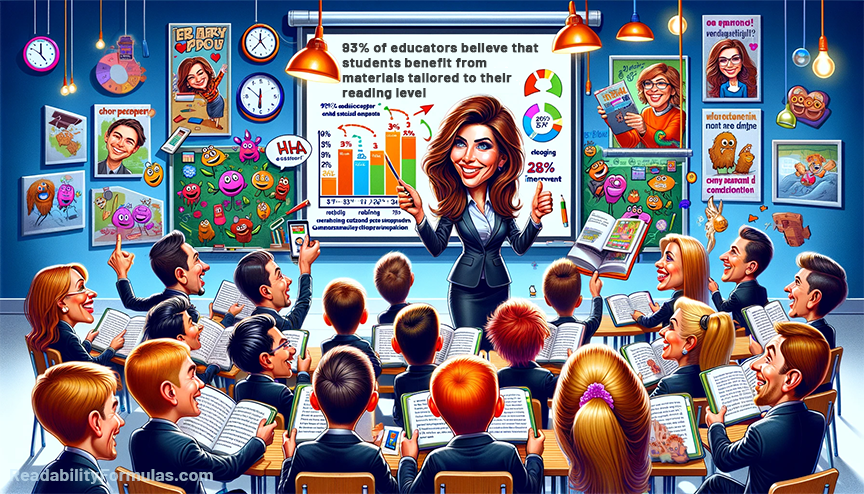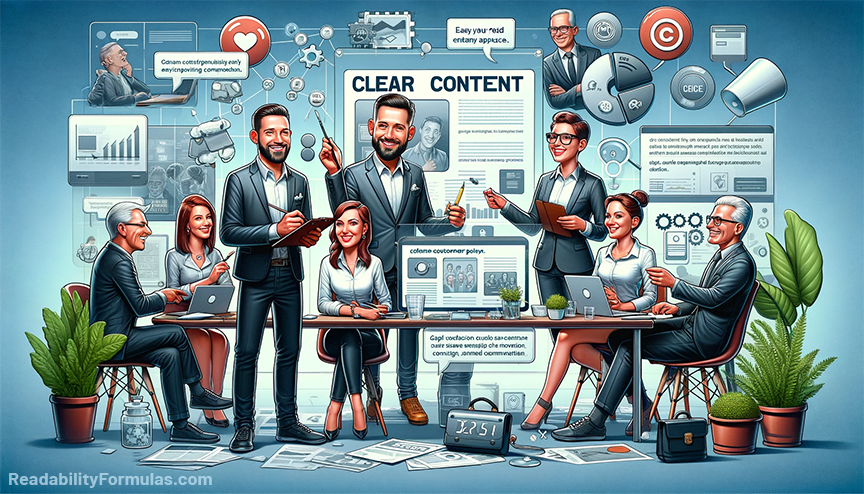In a world where digital speed often outpaces human patience, making your content digestible is not just a need—it’s an art. When a reader’s journey turns from a gentle stroll into a maze, their interest wanes, and sometimes vanishes. Overly complex or tangled content becomes a network of puzzling paths and dead ends. Seeking clarity, readers often become tangled in wordiness and technical language. The exciting quest for knowledge becomes a frustrating effort to understand.
Creating engaging content is about balancing depth with ease of understanding. It means writing content that informs and captivates. This skill goes beyond knowing the topic well; it requires truly understanding the reader’s experience.
Professionals spend nearly 20% of their time struggling to understand complex documents. Simplifying language could significantly boost productivity. — The Harvard Business Review
Readability Analysis
What is readability analysis? It’s the act of dissecting written content. It’s peeling back layers beyond just grammar and spelling. Elements like sentence length, word choice, and sentence structure play their parts in creating readable content.
93% of educators believe that students benefit from materials tailored to their reading level, leading to a 28% improvement in retaining important information.
Here are some key aspects:
1. Sentence Complexity: Readability is influenced by sentence length. Shorter sentences are easier to read and understand, while longer sentences are more intricate and harder to follow. This aspect also includes subordinate clauses and sentence construction. Research by the University of Oxford suggests that sentences longer than 20 words see a sharp decline in comprehension rates.
2. Word Choice: The choice of words impacts readability. Common, everyday words are easier to comprehend compared to technical jargon, archaic language, or sophisticated vocabulary. Using common, everyday language can increase a document’s comprehension rate by 40%, according to The Plain Language Association International.
3. Sentence Structure: The way you write sentence—including using active vs. passive voice, the order of words, and the clarity of subject-verb-object arrangements—will affect readability. Clear, direct sentences can enhance comprehension.
4. Paragraph Structure: Paragraph length and the way you organize ideas within paragraphs can influence readability. Shorter paragraphs with a clear main idea are reader-friendly, especially in digital formats.
5. Consistency: Readability analysis examines the consistency in tone, style, and tense, as well as the logical flow of ideas. Disruptions in these areas can confuse readers and hinder understanding. Mismatches in style and tone can reduce the reader’s trust in the content by as much as 35%, based on a study by the University of Groningen.
6. Visuals/White Space: The visual layout of the text, including using headings, bullet points, and white space, can enhance or detract from readability. Proper formatting helps guide readers through the text more easily. Using white space and visual elements can improve reading comprehension by up to 20%, according to the Journal of Technical Writing and Communication.
7. Reader’s Background: The intended audience’s background knowledge and reading skills impacts readability. Texts meant for experts in a field can be more technical than those intended for a general audience.
Why Prioritize Readability?
1. Clarity in Comprehension: Ensure your content speaks to everyone, from the novice to the expert. Such clarity allows readers to glean meaning effortlessly. “Every business wants to grow, and clear communication is the bridge to new markets. It’s not just what you say, but how simply you say it.” — Aisha Patel, Global Business Strategist
2. Engagement: Easy-to-digest content captivates. Spotting and fixing readability roadblocks can turn mere browsers into avid readers, encouraging them to share and return.
3. Accessibility: This analysis champions content that embraces everyone—be it those with different cognitive skills, language proficiencies, or even visual challenges. It’s about reducing jargon and refining format.
4. SEO Boost: Search engines love content that readers love. The better your content’s readability, the higher its potential rank.
5. Translations: For multilingual content, readability checks ensure your message doesn’t get lost in translation. “Translation isn’t just about switching words between languages. It’s about capturing the essence, the clarity, and the heart of the original message.” — Camila Rodriguez, Professional Translator
6. Legal Clarity: In sectors like finance or healthcare, unclear content can lead to legal quagmires. Analysis keeps ambiguities at bay.
7. Uniform Style: It ensures a consistent voice throughout. “When content flows naturally, readers dive deep. They’re no longer just visitors; they become explorers.” — Ethan Wall, Content Strategist
8. Effective Training: For instructional content, clarity can mean the difference between learning and confusion.
9. Mobile Optimization: In an age tethered to mobiles, content must fit snugly on smaller screens. “Our phones are gateways to vast worlds of information. If your content isn’t tailored for that small screen, you’re shutting the gate on potential readers.” — Leo Zhang, Mobile UX Designer
10. Brand Enhancement: Clear content paints your brand as professional and user-centric.
Articles optimized for readability witness a 25% increase in the time readers spend on the page, as per a 2022 web analytics report.
The Tools of the Trade
- Formulas like Flesch-Kincaid: They quantify readability, but aren’t the be-all-end-all.
- Eye-Tracking: Watch how a user’s eyes dance across your content to spot potential hitches.
- User Feedback: Direct user insights can spotlight areas ripe for refinement.
- Natural Language Processing (NLP): Algorithms speedily assess and suggest text improvements.
- Online Tools: Platforms like Readable.io, ReadabilityFormulas.com and Hemingway Editor go deep into sentence structures and vocabulary.
- Browser Add-Ons: Extensions like Grammarly and StyleWriter offer on-the-go feedback.
- Human Touch: Sometimes, nothing beats a manual, human review.
72% of internet users access the web via their mobile devices, underscoring the importance of mobile-friendly content.
Adopting Readability Analysis
- Know Your Reader: Understand who your audience is. This includes their interests, reading level, and preferences. Tailor your content to match their tastes and abilities. Make sure it’s relevant and they can easily understand it.
- Seek Simplicity: Prioritize clarity in your writing. Opt for simple, concise language over complex or technical terms. This doesn’t mean dumbing down your content—it means making it accessible. The goal is to convey your message effectively without complexity.
- Embrace Visuals: Enhance your content with visual elements. Use headers to break up text and make it easy to scan. Bullet points can help summarize key points and make information digestible. Include relevant images or graphics to amplify your message and aid in understanding.
- Iterate Based on Feedback: Continuously improve your content based on user feedback. Regular testing and tweaking can help you refine your approach. Pay attention to how your audience responds to different styles and formats. Adjust your content strategy accordingly. This iterative process ensures that your content remains effective and engaging over time.
—END—









